PR can change the world…we are the Agents of Change: Cyrus Jogina
In the last 10 years, PR has taken a different dimension, especially after the entry of social media and the rapid shift to digital during the pandemic period. At the same time, the industry has been facing stiff challenges, moreover client expectations have also increased, with more emphasis being given to digital and online reputation management. The industry has undergone a radical shift and the current times have pushed the industry to change gears.
In this interaction with Adgully as part of PR Conversations, Cyrus Jogina, Senior VP, Technology and Startup, Concept PR, speaks at length about trends in the field of corporate communication post-pandemic, the importance of identifying the right target audience, using technology judiciously, and much more.
What do you think are the most important trends or challenges facing the field of corporate communications currently, and how do you see the field evolving in the future?
The trends in the field of corporate communication post-pandemic are:
- Digital and Social Media communication has taken center stage. Online mediums have become even more powerful. The technology adoption cycle has drastically reduced and today, even though at the back of people’s minds they do not trust the online space but still are using it extensively, and there are multiple reasons for that, convenience is one of them, lack of time, accepted that our data is out there in the open and nothing can be done about it (which is not true), more number of options available besides discounts on many. Besides that, today there are multiple platforms available to connect with your TG, but it is important to understand how to use these platforms. There is a fine line separating spam and effective or positive outcomes. These platforms are still evolving, in the sense how these could be optimized without intriguing or disturbing personal space, like how brands use WhatsApp platform which most of the time is being used as a ‘Push’ tool, or how Instagram can be used without becoming another ‘classified space’.
- Most of the companies today wish to position themselves as a Tech company, because they believe that being a tech company puts them amongst the leagues of new-age companies/brands and their TG would respect and accept them. Reminds me of the early 2000s, the Dot Com age when companies wanted to be known as tech companies by having a website and domain name and most of them just had a computer in their office without putting it to effective use. Today, all the companies and brands need to be in the online space to connect with their TG and for better business outcomes, technology here is an Enabler, but that does not make them a tech company. That’s a big trend and a challenge faced by us in corporate communication. Brands/ companies who wish to be positioned/profiled as tech companies need to understand that tech media or journalists and tech readers are not their target audience. For example, EdTech, AgriTech, MedTech, FinTech, etc, their audience still remains education or students, teachers, etc., and not tech people.
- Conversational AI or the most common and what we know of ChatGPT, I think this tool if not used cautiously, will create problems in the communication industry. It should be used as a tool to aid your content writing skills and not be 90-100% dependent on it because then, your own personal growth is stunted, you are no longer thinking creatively or applying your own intellect, and secondly the real content writers jobs would be threatened. Like search engines, it should help you work smarter, not take away your intellect. Besides, I think this is a plagiarism tool, and just like the world is facing issues with fake news, we would soon face challenges with original content.
What the future holds, I think it is high time that companies and corporate communication teams start to identify the right target audience. What I mean is not to bifurcate the audience basis demographics, or psychographics, job titles, genders, etc. I think the right approach is to create buckets of similar profiles and use matrix format to create customized communication campaigns for similar profiled audiences and reach out to them with specific messages on platforms which would have a deeper impact, just like how AI analytics/ algorithms does for advertisements.
Secondly, the world of communication has become extremely dynamic and one needs to keep their eyes and ears to the ground to understand and be ahead of the curve, that is, first accept the change, be ready to evolve, put aside your emotions and ego, and unlearn the market/audience of yesterday and today and accept that in future they are going to be totally different.
Corporate communication professionals need to be in this constant journey of unlearning and learning and that’s why I prefer to be called as a PR Practitioner or Practicing PR Consultant and not a PR Consultant or PR Professional.
Lastly, the corporate communication agencies need to evolve and understand the needs of brands and marketers are changing. We cannot proceed with the whole suite of services we had/ have been providing. The ‘asks’ of clients are changing and they want something which we call a piece-meal. The new age brands do not want all the services and even if they do, then not from one agency, they want experts from different agencies or if an agency has those experts within, then voila. In other words, I portray communication now as ‘PRaaS’ that’s ‘PR as a Service’.
How do you keep up with industry trends and changes in communications technology, and how do you incorporate these into your work with clients?
If one needs to progress in this dynamic world, then follow what the medical professionals or legal people do. They keep learning new things, because humans are the most complex beings on this planet and they keep evolving, their thinking, their bio-system, their behaviour, etc., keeps changing. They never stagnant, hence these two professions are always trying to learn, and that’s why they are called Practitioner or Practicing Medicine, Practicing Law, similarly we corporate communication personals should also keep learning new ways to communicate, not just communicate but effective communication, that’s why I call myself is ‘Practicing PR’.
Technology should be our friend and not a master. Use technology judiciously to your benefit, it helps us remain connected in this fast and evolving world. Understand different audiences and create a connection, just like we know how and when to talk to our parents, children, friends, each one of them is different, similarly identify your audience and customize your approach to them. Have a horizontal and vertical communication approach for your clients to effectively connect with their TG. Strategize your communication based on Primary Research with a dash of Secondary Research. Use the tech tools like Grammarly, Chat GPT (and the likes), Canva, etc., to help you but with caution.
New age media and mediums are becoming mainstream today, News is no longer in Textual format. Hence, communication personals need to get into customizing their PR tools, like a simple Press Release needs to be drafted differently for each platform and not just one size fits all, example, the press release for news paper is different (different for mainlines to business) to broadcast media (different for TV to a Radio), to an Online publication. Similarly the media pitch has to be different for different mediums, like one for a Podcast is different to a Webcast, to a newspaper to a magazine. Besides of course understanding the person to whom you are pitching or talking to, because at the end of the day you are talking to a fellow human and each one of us wishes to be approached differently.
Lastly, there is no alternative to Reading and Networking to enhance your knowledge. Tech has enabled and helped us to be connected with the world, so keep yourself abreast with the happenings around the world and learn from best practices. Get inspired, use the learnings in your communication approach to create a positive impact for your clients communication mandate. Help your clients to understand the dynamics of communication, help them to evolve. Have regular meetings with not just the comms team, but with CXOs, marketing and sales team to understand the ground realities. Keep evaluating and analysing your communication approach at every step. The old methods of measurements do not serve any purpose today. The measurement matrix has become very complex, and we have tools which can help us, besides there are agencies today who use analytics which goes beyond the obvious ones like Share of Voice, Tone of Voice, Message Analysis etc, besides the social and digital media analytic tools. All these are helping communication personnel to better understand and define campaigns success parameters.
How do you measure the success of your agency’s marketing and advertising campaigns? What metrics do you use to evaluate their performance and ROI?
Measurement of success in communication is one of the most complex aspects because we are dealing with humans and communication is about Perceptions and that’s very subjective and intangible. I measure communication campaigns on two parameters:
- Basis the scope of work, that’s number, that is, the number of inputs leading to number of outputs. This is plain science of using and reading numbers.
- Basis identified Communication Objectives, Key Messages and Perception or Position which we strived to achieve at the start of the communication campaign. Now this is the tricky one and there are various tools I use, but again there is a caveat here, because this is a dangerous territory of acceptance of reality. In my past experiences, the comms and marketing teams are not very open to accept the reality, because the numbers which this throws are far too low compared to the PR value basis Ad values that they are accustomed to. I do the evaluation basis various analysis and this is done using 3x3, 3x4, 4x4 matrix, where I use Independent and Dependant Variables (PR Tools) to understand the effectiveness and success/ failure of communication, leading to what degree of achievement of a particular objective or key message have, to a set of audiences and ultimately what degree of perception change did we achieve from where we started and strived to achieve… how much has the needle moved and what were/ are the reasons for each; objective, key messages, audience behaviour, perception change.
- Lastly, it’s all about business and ROI, so feedback from the marketing and sales team is one of the best evaluators because they are in touch with their TG who is providing them with real time feedback.
What are the most common communication challenges that you have encountered in your work, and how did you overcome them?
Most common communication challenges that I have encountered:
- Understanding of PR. The power of PR and what it can do. I don’t think most of the PR people and comms team understand the real power of PR. It’s not about media coverage or clips that one garners but evaluation of each piece of coverage and how it impacts the overall perception and company’s or spokesperson’s or brand’s wellbeing. How is PR impacting the Business Objectives – that needs to be well defined and measured. PR should work with brand managers to draft the narrative and devise strategy to achieve. I think PR or Comms teams (especially in India) have still not got its due importance.
- Compared with Advertising and not ready to accept that though both are part of communication, they are very different. They are not Siamese Twins, but Cousins.
- Comms is a job of a specialist, but most of the time, we come across less qualified/ experienced people heading large communication mandates. Here, practical experience is definitely a very critical factor to be considered and personals with not just years of experience but experience of working on different mandates, tactics and tools deployed, worked and created best practices, engaged/ worked with different teams across geographies would the right people for the job and they in turn train their junior teams for future.
- Not understanding the overall picture of Business or Brand. The Brand Marketing or CXOs are not involving the Comms and PR teams in their Boardroom discussions. The Key Messages are not being studied and identified. There is a sea of difference in how MNCs and International PR agencies work. The same MNC agency in India works differently in India. And this is not just an issue with agencies, but the clients/ brands too are not willing to adapt to global standards. The other critical factor is the agency fee, there is a huge price difference in what an Indian agency charges or PR mandate in India is paid for compared to other geographical markets. Surprisingly the same brand when in India, does not accept the fee which should be a global standard. The scope of work here in India will be high and paid less while in other markets, say in Singapore, UK or in the US, the scope of work would be limited but the fee would be about 3X to that of India.
How did I overcome it? Well, that’s still a WIP. It’s a slow process of educating the clients and comms team and this is extremely difficult to achieve alone. There has to be unity and PR association needs to take this up unanimously but reality is that India is a very competitive market and the brands and comms team take advantage of this fact.
Can you describe a project or initiative that you led that was particularly challenging, and how you navigated the obstacles to achieve success?
There are many such projects and initiatives which I can state, but unfortunately, I do not have permission to quote the brand names. As I can stated in the past I was instrumental in educating the Indian market about Internet Viruses and Antivirus when the first Internet virus struck the world, or educating the Indian market about online auction space, or the whole strategy of bringing Open Source platforms to consumers or launching a legendary motorcycle brand as one of the late entrant in the already cluttered and couple of brands dominating the Indian market and carving a niche, garnering a major market share in less than 18-months of its launch.
There are many and each one was an excellent experience. Each obstacle that came my way, helped me think and evaluate the situation differently, each time I thought in a disruptive way. I always believed in the power of research and that helps me to understand two most important Needs of my client’s TG: What is the Unmet Need and what is the Unidentified Need of my client’s TG. And who is this TG, how are they impacted, what and how do they wish to be communicated, what platforms and mediums are they on and then I worked on my communication strategy, which many times the client did not accept because they were looking for quick results while lasting perceptions don’t happen overnight. But whenever the client understood the big picture, they became the leaders and market creators. And that’s the power of PR, which I believe in and that’s what gives me a high. PR can change the world…we are the Agents of Change.



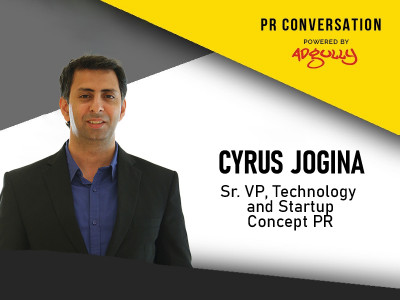

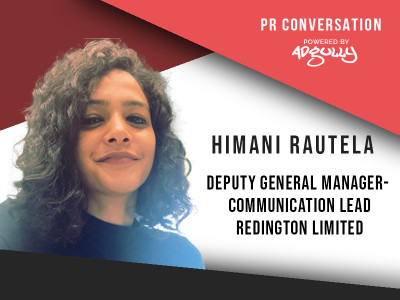
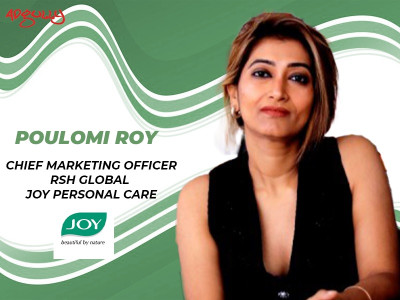




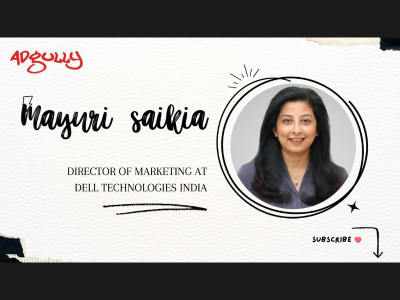
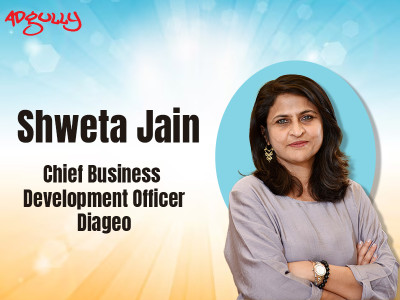
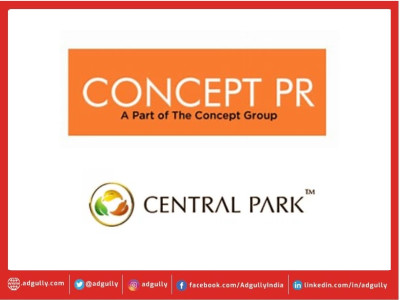
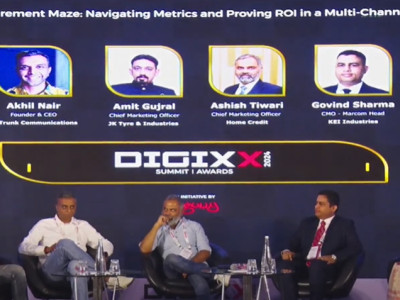



Share
Facebook
YouTube
Tweet
Twitter
LinkedIn